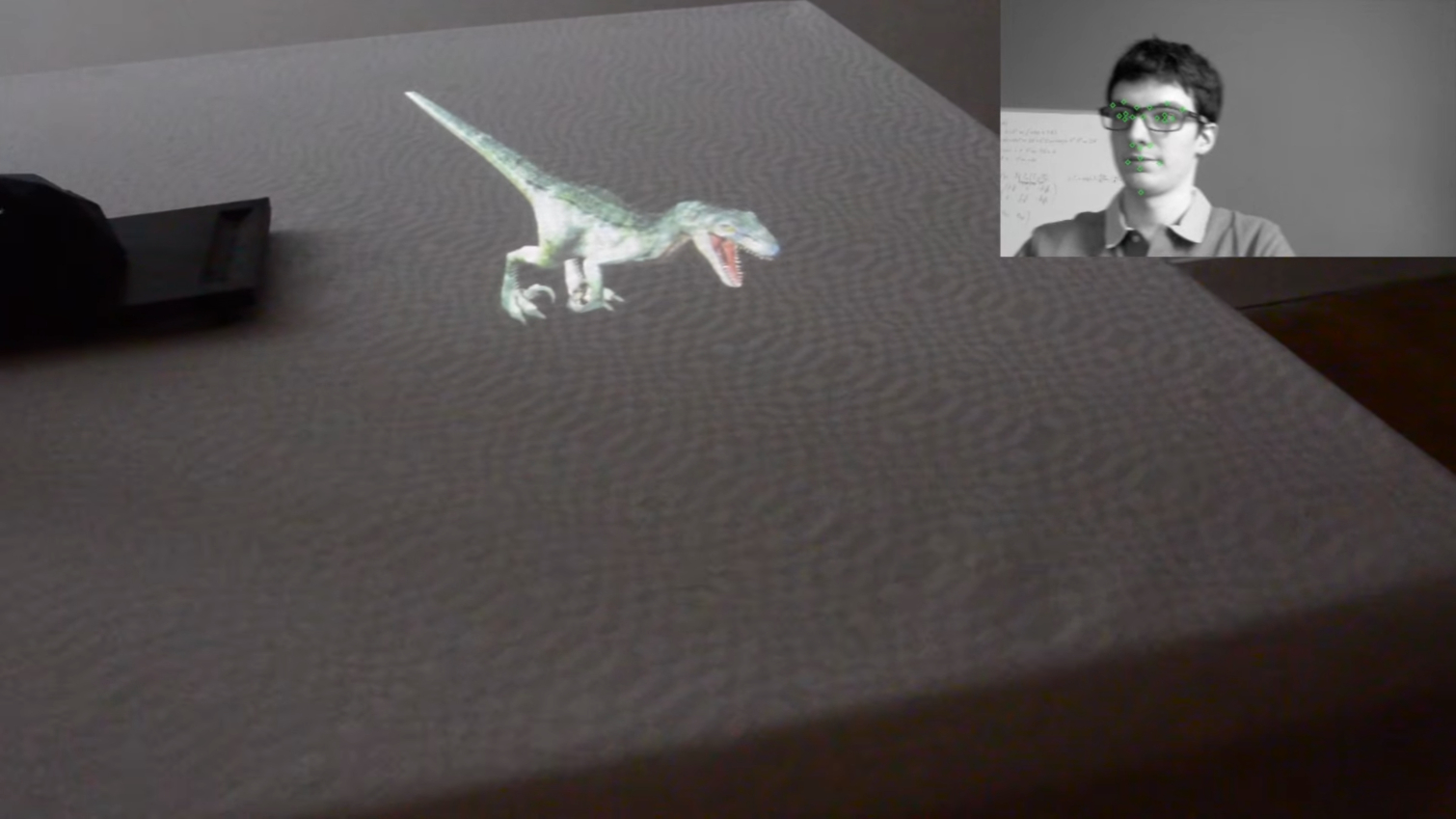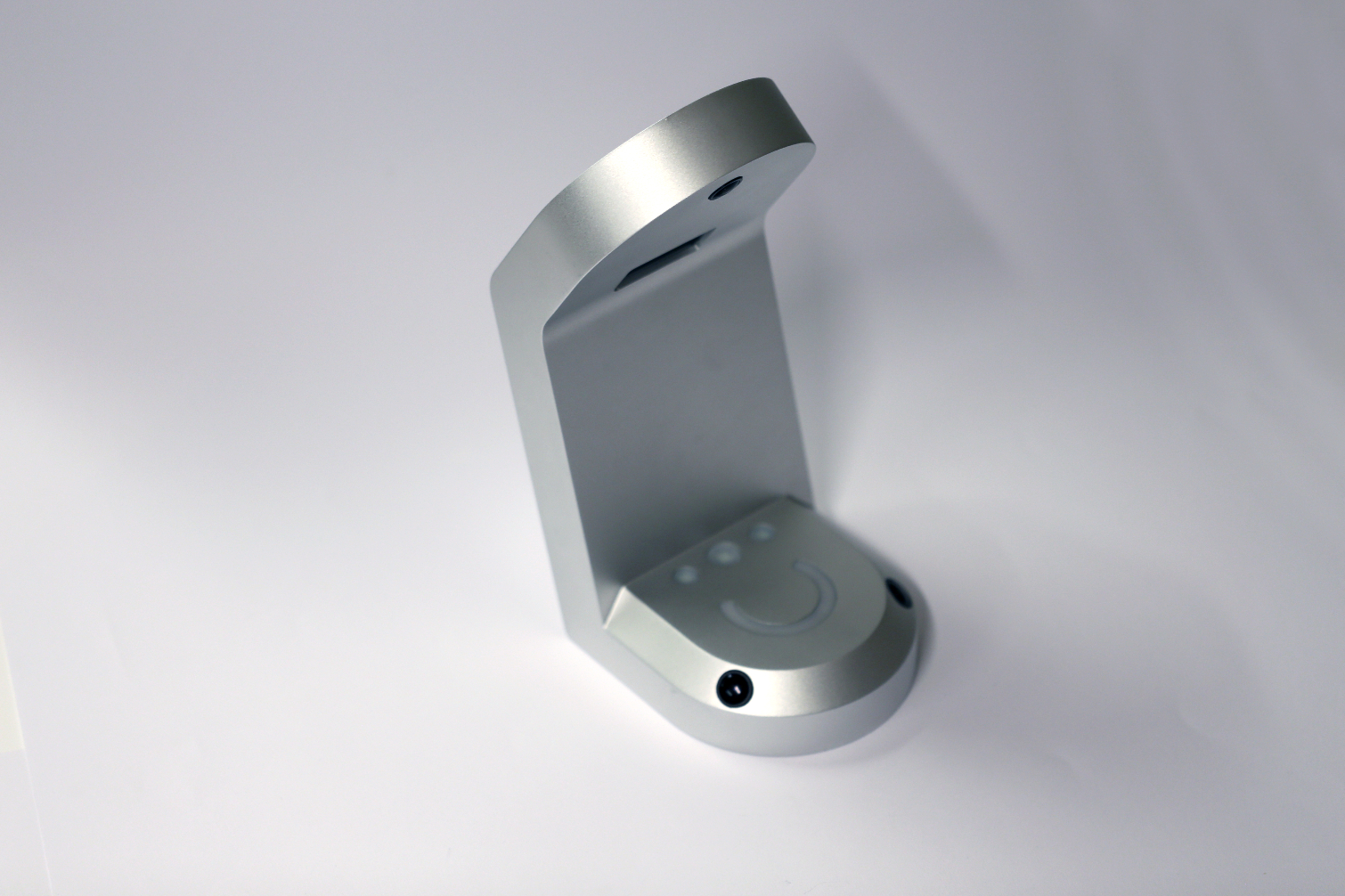Introducing HoloLamp: Portable, Projector-Based, Glasses-Free Augmented Reality
You could say that CES 2016 was the year of VR, but at CES 2017, it may be AR's time to shine.
This year at the big show, augmented reality moves from a futuristic idea towards a tangible consumer product. Microsoft started selling its Hololens developer kits in 2016, but one of those will set you back $3000. Meta just started shipping Meta 2 developer kits to early customers. The AR HMD’s specifications lead us to believe the experience is comparable to Hololens, but with a much wider field of view. Meta pre-sold the dev kits for $949, but after the new year, the company raised the price somewhat.
At over $1,000, Meta 2, like the Vive and Rift VR headsets, is out of reach for many consumers. This is not to mention that a significant portion of the population isn’t interested in donning a bulky headset while they work and play. HoloLamp believes it has a solution for the latter problem.
“The smart glasses and headset industry have been tirelessly working to deliver a mainstream augmented reality experience, though they have been unsuccessful in developing a product that consumers actually want to wear,” said Guillaume Chican, co-founder and inventor of HoloLamp. “A headset reduces a user’s field of view and tends to be uncomfortable, whereas HoloLamp enables the user to achieve an immersive experience without having to hold or wear any equipment. The hands-free and glasses-free technology allows users to easily engage with their surroundings while using HoloLamp, making it an ideal solution for numerous business and personal environments.”
HoloLamp is a portable, self-contained, projection-based augmented reality system that fits on your desk and plugs into your PC. The HoloLamp includes a pico projector that projects a simulated holographic image onto any surface, allowing you to experience AR without a bulky headset. The system features multiple cameras that scan the projection surface topography and objects within the space. HoloLamp also uses face tracking cameras to help create the hologram illusion.
HoloLamp leverages “spatial augmented reality,” which allows the system to project images onto any surface. HoloLamp maps the surface below the projection area using advanced computer vision techniques and warps the projected image to compensate for different surface elevations and angles. The HoloLamp renders the projected image in such a way that it tricks your brain into perceiving a holographic image when you’re really looking at a flat projected image. The system also tracks the position of your face in real time to ensure that you always see the correct perspective.
HoloLamp is a tabletop device, but it doesn’t work with multiple people. HoloLamp offers a “one-to-one experience” because the illusion doesn’t work unless you see the image from the correct perspective. HoloLamp said spectators would be able to perceive the effect, but the perspective would be off for anyone other than the primary user.
Get Tom's Hardware's best news and in-depth reviews, straight to your inbox.
“We see the world in 3D because our brain knows we live in a 3D world, but a subtle change from technology is enough to make your brain think the 2D projections it’s seeing is a real 3D object,” said Alan Jay, co-founder of HoloLamp. “Our system uses a camera-based, face-tracking system to know where your eyes are, and as you move, it alters the projection as if you were looking at a real 3D object. The number of environments that can benefit from seeing and interacting with a 3D model are truly endless.”
HoloLamp enables developers to mix physical elements with digital effects to produce tabletop mixed reality experiences. If games like Skylanders, LEGO Dimension, and Disney Infinity that use physical props to interact with the game get your kids excited, imagine their reaction to 3D animations interacting with their toys on the desk. You could even add animations to toys that are moving around. HoloLamp can track multiple objects within the projection area and add corrected animations in real time.
HoloLamp is compatible with the Unity game engine, so it should be easy for many developers to adopt the platform. HoloLamp’s software development kit includes a plugin for Unity that adds compatibility with HoloLamp’s computer vision technology. HoloLamp’s founders expect to see a wide range of content the device, including 3D games and educational experiences. Desktop holographic projection could be vastly beneficial for product designers who wish to see realistic prototypes of their design in the real world. We can imagine a device like HoloLamp could be helpful to repair technicians if paired with software such as Scope AR’s WorkLink.
HoloLamp didn’t reveal the minimum system requirements to operate the device, but they must be low. HoloLamp’s developer kit includes libraries to run the device on Windows 10, which isn’t surprising. But it also includes libraries for Mac OS X, which is unusual for immersive devices. Apple’s computers don’t support high-end GPUs, which is the reason the Oculus Rift and HTC Vive don’t support Macs.
When Can I Get One?
HoloLamp hasn’t figured out how much the portable augmented reality projector will cost, but we should know soon. The company plans to open international pre-orders for HoloLamp in January, following CES.
Kevin Carbotte is a contributing writer for Tom's Hardware who primarily covers VR and AR hardware. He has been writing for us for more than four years.
-
dusty13 this is not AR this is a simple projector. nothing 3d about it and nothing AR about it either except for a bit of marketing blabber to sell a small desk-projector as much higher prices than this hardware type would warrant.Reply -
Crystalizer It's even better if it's just a 1 or 2 projectors and the ar is mainly generated with software. That means this could become very cheap for all of us.Reply -
MASOUTH Gotta love people that just blabber nonsense without even reading or looking into something.Reply
1) AR does not mean 3D or a hologram. It is merely a computer generated sensory input on the real world. This generates visual images into the real world. Criteria met.
2) the projector tracks your viewing angle and changes the projection accordingly so that you are viewing the correct side of the object from that view point. That would be 3D, to say otherwise would be to say that we STILL have not created 3D effects on the computer or movie screen because they are "only flat surfaces". Criteria 2 met.
3) "The HoloLamp renders the projected image in such a way that it tricks your brain into perceiving a holographic image when you’re really looking at a flat projected image.". Marketing blabber? Sounds like a pretty straight forward description of what they are selling. -
Crystalizer Reply19117118 said:Gotta love people that just blabber nonsense without even reading or looking into something.
1) AR does not mean 3D or a hologram. It is merely a computer generated sensory input on the real world. This generates visual images into the real world. Criteria met.
2) the projector tracks your viewing angle and changes the projection accordingly so that you are viewing the correct side of the object from that view point. That would be 3D, to say otherwise would be to say that we STILL have not created 3D effects on the computer or movie screen because they are "only flat surfaces". Criteria 2 met.
3) "The HoloLamp renders the projected image in such a way that it tricks your brain into perceiving a holographic image when you’re really looking at a flat projected image.". Marketing blabber? Sounds like a pretty straight forward description of what they are selling.
Augmented reality. To augment reality. Yeah I got that part and what comes to that it tricks your brain. It does need a really good algorithm to bend the image in the projection so that it can do the job. If implementing such algorithm would be so easy pokemon go would have had better augmentations too. My thoughts where: Are you mostly just buying for the software, if it's made out of pico projector? -
MASOUTH Not sure why you quoted me, I wasn't addressing your comment but Dusty and their whole "I didn't really understand/ read the article and haven't looked any further into this but I'm just going to assume that I know what I am talking about and blabber away"Reply -
bit_user Reply
First, there are surely limits to how much depth they can simulate, before you notice it's not really 3D.19118616 said:It does need a really good algorithm to bend the image in the projection so that it can do the job. If implementing such algorithm would be so easy pokemon go would have had better augmentations too.
Second, they use multiple cameras to scan the surface and estimate its depth. In this regard, you cannot compare it to Pokemon go, since the latter runs on mainstream phones which have only one back-facing camera.
Third, it uses face tracking, which I'll bet Pokemon Go is also lacking.
It's not just a projector. It contains several cameras, which are needed to achieve the effect. This makes all the difference.19118616 said:My thoughts where: Are you mostly just buying for the software, if it's made out of pico projector?
I'm thought these points were all pretty clear, from the article.
If this were inexpensive enough, I think it could find quite a few niches. I particularly like the AR for toys example, but both that and the educational applications will be severely hampered by its single-viewer restriction. Otherwise, if it could be made cheaply enough, perhaps some big toy company would buy them.



